#Alfonso X of Castile
Text

“I kinda miss when monarchs had nicknames like Suleyman de Magnificent, Alfonso X the Wise or Peter the Cruel” - Submitted by Anonymous
26 notes
·
View notes
Text

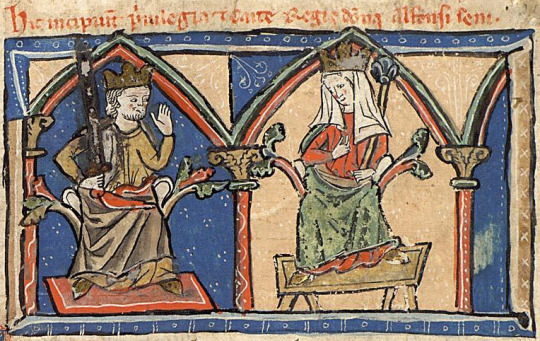




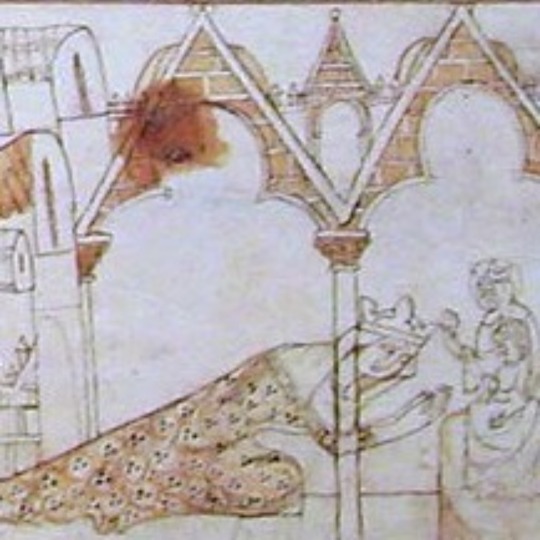

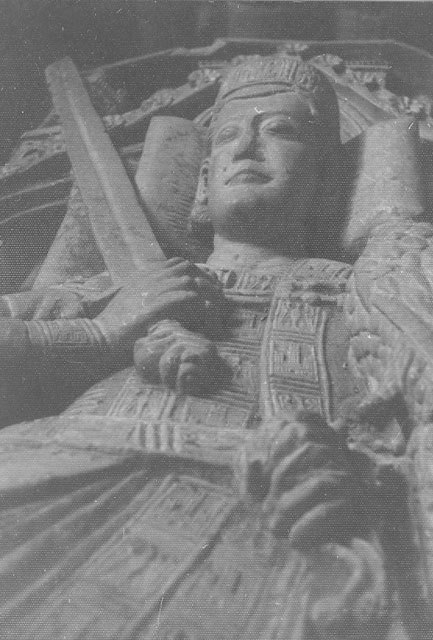

The Bastard Kings and their families
This is series of posts are complementary to this historical parallels post from the JON SNOW FORTNIGHT EVENT, and it's purpouse to discover the lives of medieval bastard kings, and the following posts are meant to collect portraits of those kings and their close relatives.
In many cases it's difficult to find contemporary art of their period, so some of the portrayals are subsequent.
1) Ferdinand III of Castile (1199/1201 – 1252), son of Alfonso IX of Leon and his wife Berenguela I of Castile
2) Alfonso IX of Leon (1171 – 1230), son of Ferdinand II of Leon and his wife Urraca of Portugal; with Berenguela I of Castile (1179/ 1180 – 1246), daughter of Alfonso VIII of Castile and his wife Eleanor of England
3) Blanche of Castile (1188 – 1252), daughter of Alfonso VIII of Castile and his wife Eleanor of England
4) Henry I of Castile (1204– 6 June 1217), son of Alfonso VIII of Castile and his wife Eleanor of England
5) Urraca of Castile (1186/ 1187 – 1220), daughter of Alfonso VIII of Castile and his wife Eleanor of England
6) Ferdinand of Leon (ca. 1192 – 1214), son of Alfonso IX of Leon and his wife Theresa of Portugal
7) Elisabeth of Swabia (1205 – 1235), daughter of Philip of Swabia and Irene Angelina
8) Alfonso X of Castile (1221 – 1284), son of Ferdinand III of Castile and his wife Elisabeth of Swabia
9) Philip of Castile (1231- 1274), son of Ferdinand III of Castile and his wife Elisabeth of Swabia
10) Eleanor of Castile (1241- 1290) daughter of Ferdinand III of Castile and his wife Joan of Ponthieu: with Edward I of England ( 1239 – 1307), son of Henry III of England and his wife Eleanor of Provence
Note: The marriage of Alfonso IX's parents got also annulled/declared void due to consanguinity, but I didn't include him on the list because this example is already present in Ferdinand III & IV
#jonsnowfortnightevent2023#canonjonsnow#asoiaf#a song of ice and fire#day 10#echoes of the past#historical parallels#medival bastard kings#bastard kings and their families#ferdinand iii of castile#alfonso ix of leon#berenguela i of castile#blanche of castile#henry i of castile#ferdinand of leon#urraca of castile#alfonso x of castile#philip of castile#eleanor of castile#edward i of england
4 notes
·
View notes
Text
Sala del Almirante de los Reales Alcázares de Sevilla: el cuadro de "Las postrimerías de San Fernando" de Virgilio Mattoni
Vista general de la Sala del Almirante.
Inicio el examen de este importantísimo edificio de Sevilla con esta Sala, cuya importancia histórica es innegable:
Debe su nombre al Tribunal del Almirantazgo de Castilla, que tuvo su sede aquí. El Salón del Almirante era una parte de la “Casa de Contratación de las Indias”, institución funda- da en el Alcázar de Sevilla en 1504 por Isabel la Católica…
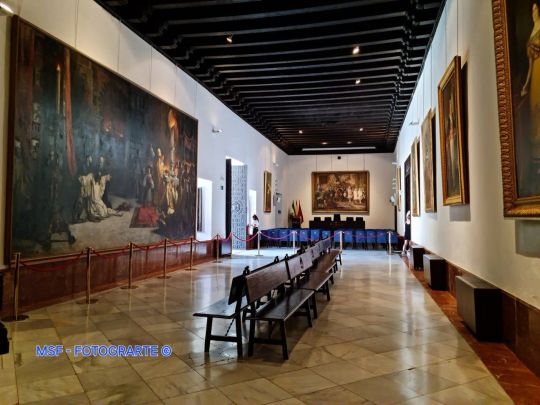
View On WordPress
#Alfonso X el Sabio#Crónicas de España (Alfonso X el Sabio)#Edad Media#En Español#España#Fernando III el Santo#Pintura#Pintura histórica#Pintura religiosa#Reales Alcázares de Sevilla#Sala del Almirante#Sevilla#Siglo XIX#19th century#Middle Ages#Ferdinand III the Saint of Castille#Alphonse X the Wise of Castille#Castille#Spain#Seville#Paintings#19th century paintings#13th century
2 notes
·
View notes
Text

Four large craters on the Moon // Wilco Kasteleijn
From top to bottom left: Arzachel, Alphonsus, Ptolemaeus, and Albategnius.
Arzachel crater is named after the Arabic instrument maker Abū Isḥāq Ibrāhīm ibn Yaḥyā al-Naqqāsh al-Zarqālī al-Tujibi (1029 - 1100). His Latinized name was Arzachel, meaning "the engraver." He wrote books about constructing instruments for calculating the positions of the planets.
Alphonsus crater is named after King Alfonso X of Castile (1221-1284). He was sometimes nicknamed the Astrologer for the creation of the Alfonsine tables used to compute the position of the planets.
Ptolemaeus crater is named after the Greek philosopher Claudius Ptolemy (c. 100 - 170). Among his many accomplishments is the Almagest, the earliest surviving complete book on ancient astronomy. It also provided mathematical "proof" for the geocentric nature of the universe.
Albategnius crater is named after Abū ʿAbd Allāh Muḥammad ibn Jābir ibn Sinān al-Raqqī al-Ḥarrānī aṣ-Ṣābiʾ al-Battānī (bef. 858 - 928), one of the greatest and most famous astronomers of the medieval Islamic world. It was the accuracy of his data that later led Nicolaus Copernicus to consider a heliocentric model of the universe.
#astronomy#astrophotography#solar system#moon#the moon#luna#lunar surface#crater#lunar crater#arzachel#alphonsus#ptolemaeus#albategnius#history
27 notes
·
View notes
Note
I've noticed how some Basques in Navarra claim they are being ""colonized"" by Basques from Euskadi and fear being "annexed" into it, but that always made me confused? Because the Basque Kingdom of Navarra started in... Navarra.
(Addendum) I don't know if it's a similar thing with the one that happens with Catalunya and Valencia, where Valencians claim they are not actually Catalans and don't speak Catalan and that Valencian is a different language altogether... 😬
Kaixo anon!
It has similarities, but it's not the same case. All of this is the consequence of the zonification of Nafarroa: it’s divided in 3 different regions regarding Basque language.
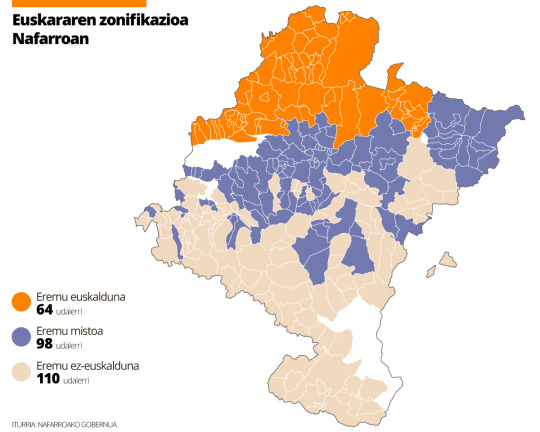
In orange, Basque-speaking municipalities; in purple, mixed municipalities; in beige, Spanish-only-speaking municipalities.
A quick historical recap. Although it’s true that the southern side of Nafarroa was the part that suffered the Roman influence the most - it was an ideal location for Roman agriculture - and was very quickly romanized, Euskara didn’t disappear into thin air.
Back in the Middle Ages, Castilian king Alfonso X the Wise used Latin expression “lingua navarrorum” (the language of the Navarrese), and king Charles III of Navarre swore his coronation “in ydiomate navarre” (the language of Navarre). This language was clearly regarded as a different and opposed one to Castilian Romance or Latin, and scholars suspect it would have been probably Euskara.
These mentions happened after Muslim invasion, so we see that after centuries using Latin, Arab, and Romance in Southern Nafarroa, there still remained native languages which were used by many people; people enough for the kings to use it so they could be understood by their subjects, at least.
A bit further in time, in 1566, queen Jeanne III of Navarre requested to translate the New Testament to Euskara so her Basque-speaking subjects could understand it (Bibles and masses were solely in Latin, a language only known by priests and nobility by then). Why even bothering if in the Kingdom of Navarre Basque-speakers were a minority? We highly doubt that a queen was interested in bringing the Bible to a tiny part of the Navarrese population specifically…
However from the 16th century on, everything goes downhill: Castile assimilates the Kingdom of Navarre, all the high public servants would come from Castile or Aragon, and were unable and unwilling to speak Euskara. In 1795 the social elite (mayor, priests, etc) of Artaxona [also in the South, remember] went to court to demand that the town public notary learnt the Basque language since it was “the language most commonly used in town”. They lost the trial.
In the 19th century, the French invasion and the Carlist Wars hastened the regression of Euskara in southern Navarre, that turned almost 100% Spanish-speaking. Franco’s dictatorship just consolidated that situation.
So historically, Basque was spoken by most Navarreses - no matter from the north or the south -, it was just in the last 200 hundred years when it was lost in the southern part of the region.
Nafarroa becoming divided into zones [Basque-speaking, transition, and non-Basque-speaking] is said to be based on history but we all can see it’s bullshit.
That said, it’s a bit easier to understand why some Navarreses have this animosity towards Basques - not only towards Basques, also towards Basque-speaking Navarreses. They like to be considered Navarrese and not Basques - which is super respectable - because the kingdom of Navarre was the one that included Basque people and not the other way around - which is also very true... if we stopped in the Middle Ages. If we go back further in time, we'll find the county of Vasconia, though.
However don’t be fooled. They will swiftly drop historical accuracy to defend that Basque was never spoken in middle and southern Nafarroa and that Basque is being imposed as part of a Basque political agenda; that Basque people are trying to colonize them and make them lose their identity; and that they should resist at all costs by rejecting Basque as an imposed language. Spanish wasn't the imposed one, Euskara is. French and English - taught in every school - are also not imposed and free to go on seemingly.
See how just 2 centuries of assimilation and banning of Basque have twisted their perception? Basque people are imposing our language on them… our language that for centuries was called… the language of the Navarrese??? It’s insane. The Spanish Constitution includes the possibility of uniting Euskadi and Nafarroa in just one Autonomus Community if approved by a referendum, but of course with this social situation the mere mention of it will be controversial to say the least.
So this is what dividing a region into here you can speak a language, here you can speak it but you’ll be part of a tiny minority, and here you’ll find every obstacle imaginable to speak / learn it does to people. Language zonification in Nafarroa is evil and a blatant tool for assimilation that has worked wonders.
#euskal herria#basque country#pays basque#pais vasco#euskadi#nafarroa#zonification#euskera#euskara#basque#language#history#culture#issues#anons
23 notes
·
View notes
Text

Eleanor of Castile, Queen of England
Her childhood was spent in the centre of the Spanish reconquest and was dominated by her military hero of a father (St Ferdinand) and her prodigiously clever brother (King Alfonso X the Learned).
Married at the age of twelve and a mother at thirteen, she gave birth to at least sixteen children, most of whom died young.
She was a prisoner for a year amid a civil war in which her husband’s life was in acute danger. Devoted to Edward, she accompanied him everywhere.
Eleanor was a highly dynamic, forceful personality who acted as part of Edward’s innermost circle of advisers, and successfully accumulated a vast property empire for the English Crown.
In cultural terms her influence in architecture and design – and even gardening – can be discerned to this day.
The Eleanor crosses were a series of twelve tall and lavishly decorated stone monuments topped with crosses erected in a line down part of the east of England. King Edward I had them built between 1291 and about 1295 in memory of his beloved wife.
Eleanor the queen was, therefore, not merely an intelligent and able woman, but a woman of many interests, which she pursued with considerable enthusiasm and determination. Her extensive reading ensured that she had much to contribute to discussions in many directions – be the conversation literary, historical, military or theological – and her sense of humour seems to have ensured that she wore her considerable scholarship lightly. She presents herself to us as a woman with a vibrant zest for life. Her vitality is reflected in her passion for hunting and even more so in her obviously notorious fondness for delicious food, which even had local poor women bringing fine items (or on one occasion ‘a large loaf’) for the queen’s enjoyment. This last vignette also echoes the earlier evidence of her wardrobe accounts. Eleanor might have had a terrible temper when roused, but she seems to have exercised it on those who were in positions of power. To those who occupied a more humble position, she was a kindly and approachable queen; a real woman, not a figure of unimaginable glamour.
Sara Cockerill, Eleanor Of Castile: The Shadow Queen
46 notes
·
View notes
Text
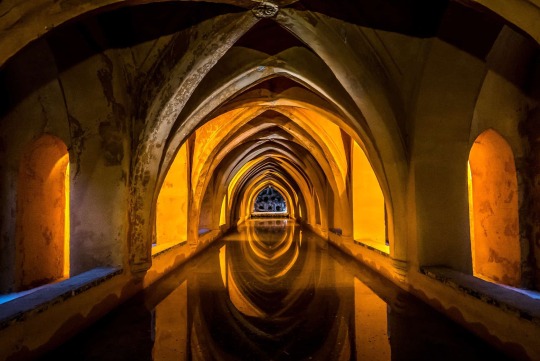
Baths of Doña María de Padilla Alcázar Seville, Spain. Almohad cistern (12th/13th century) located on the ground floor of the Patio del Crucero. At the time of King Alfonso X it was covered with ribbed vaults. It gets its name from Doña María de Padilla, the lover of the King of Castile, Pedro I el Cruel.
104 notes
·
View notes
Text

Violant of Aragon with Alfonso X of Castile in 13th century manuscript Tumbo de Touxos Outos
Violant or Violante of Aragon, also known as Yolanda of Aragon (8 June 1236 – 1301), was Queen consort of Castile and León from 1252 to 1284 as the wife of King Alfonso X of Castile.
3 notes
·
View notes
Text
I sat on this for weeks and lost track of the post on @staghunters's blog (sorry, Nina!) but she tagged me in a meme where the idea was to do a song I like for each letter in my URL, then tag a number of people equal to the number of letters. My URL has twenty-six letters in it so I'll do my best to scrounge up that many people I think might be interested!
M: "Mother," Florence and the Machine
O: "One Song at a Time," Mark Knopfler
N: "Non sofre Santa Maria," which a ton of great early music groups have done; I found out about the text it's in, Cantigas de Santa Maria by King Alfonso X of Castile, from a group called Ensemble Decameron, but I don't think they've done this one in particular
S: "Stranger," Vampire Weekend
T: "These Foolish Things," lots of people but I really like Greta Keller's version
R: "Romeo and Juliet," Dire Straits
O: "Other Side," Metric
U: "Un di, felice, eterea," Giuseppe Verdi (from La traviata)
S: "Slow Boat to China," lots of people but I really like Joni James's version
G: "Gondola no uta," Baisho Chieko's rendition of which I especially love
O: "Our Song," Taylor Swift
U: "Utakata," Pink Lady
R: "Reversion (Desire)," Nakamori Akina
M: "Morning Elvis," Florence and the Machine
A: "Atlantic City," Bruce Springsteen
N: "Night and Day," lots of versions but I really like the one from Ella Fitzgerald Sings the Cole Porter Song Book
D: "Disposer supreme and Judge of the earth," which hymnary.org says is by someone called Jean-Baptiste de Santeul and, in its English form, someone called Isaac Williams
I: "Idumea," apparently a Charles Wesley hymn (Hymns Georg) according to hymnary.org
Z: "Zero and Blind Terry," Bruce Springsteen
I: "In questa reggia," Giacomo Puccini (from Turandot)
N: "Nanpasen," Nakamori Akina
G: "Get Out of My House," Kate Bush
C: "Celebrate," Metric
A: "Alone," Moritaka Chisato
T: "Ti voglio bene, Minnie," Giacomo Puccini (from La fanciulla del West)
S: "Seven," Taylor Swift
Tagging (DEEP BREATH) @wedding-shemp @lilaccatholic @marzipanandminutiae @invisiblemelonmoose @please-dont-pet-the-okapi @tar-miriel @nekozalenky @rebeccadumaurier @absynthe--minded @itsallwearecalledtodo @teabooksandsweets @ryttu3k @deankarolina @sapphicscience @taramacgay @ace-and-ranty @2008hondacivic @clarascuro @mysticalsadgirl @teabookgremlin @adelestein @pikestaff @goldoans @vickythestrange @liesmyth @carys-the-ninth
I think that's the right number. If it's not, oh well.
7 notes
·
View notes
Text
Lmao I accidentally found out about Alfonso X the Wise, sorry HRE bois, now Castile is my personal favourite
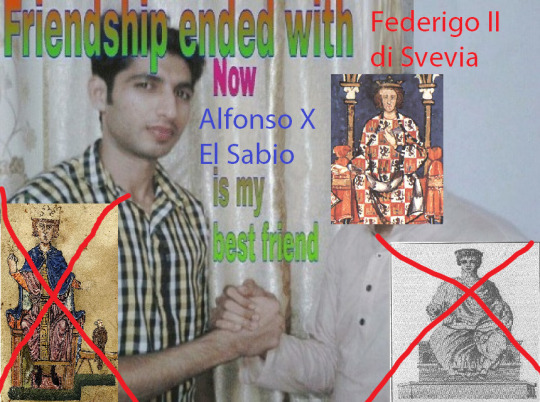
#also alfonso’s nickname’s the Astronomer#he wrote beautiful cantigas#okay maybe not him but his court poets but still#gigachad#duke’s jokes#Alfonso X#federico ii
12 notes
·
View notes
Text
The Cantigas de Santa Maria is a thirteenth century medieval song book dedicated to the Virgin Mary, commisioned by King Alfonso X of Castile. Consisting of 420 songs, it is one of the largest existing collections of medieval music. Of note, nearly all of the songs were set to the tune of an existing secular love song. Cantigas was written as part of a movement by the church to appropriate the music of the troubadours with Mary taking the place of the object of the troubadour's affection. Effectively, it is the medieval equivalent of the proverbial rapping youth pastor. And I think that's beautiful.
8 notes
·
View notes
Photo


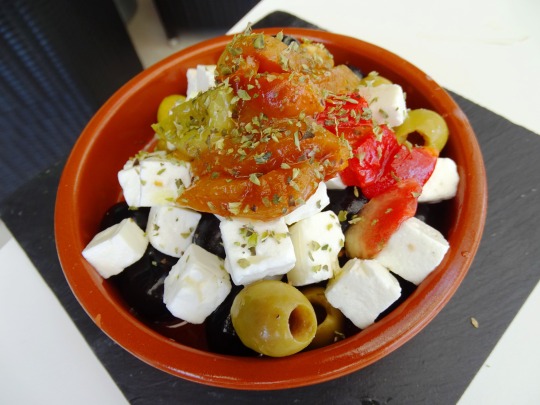







World Tapas Day
World Tapas Day, observed annually on the third Thursday of June, is an international holiday celebrating the small Spanish Tapa dish that is usually served with drinks. This year, it falls on June 15. Tapas may be served cold (such as in mixed olives and cheese) or hot. In some bars and restaurants in Spain, South America, Mexico, the United States, and a few other regions across the globe, tapas have evolved into a more sophisticated cuisine than one that is mundanely served with drinks. It can now be served as a full meal if desired. In some Central American countries, tapa snacks are known as ‘bocas,’ and in some parts of Mexico, it is referred to as ‘botanas.’
History of World Tapas Day
The word ‘tapas’ is derived from the Spanish verb ‘tapar,’ which means ‘to cover,’ a variation of the English word ‘top.’ In Spain, before the 19th century, tapas were served in posadas, albergues, or bodegas, which offered meals and rooms to travelers. Because few innkeepers and travelers could read and write, samples of the dishes were made available by innkeepers on a ‘tapa,’ which is a Spanish word for ‘pot cover.’
According to the book “The Joy of Cooking,” the first tapas were thin slices of bread or meat which sherry drinkers used to cover their glasses between sips to prevent fruit flies from hovering over their drink. The meat was normally ham or chorizo, both of which are very salty and activate thirst. This made bartenders and restaurant owners create a variety of snacks to serve with sherry, invariably increasing their alcohol sales. The tapas eventually became as important as the sherry. Tapas have evolved through Spanish history with new ingredients and influences.
The discovery and emergence of the New World birthed the introduction of tomatoes, sweet and chili peppers, which were readily accepted and grown in Spain’s microclimates, further contributing to the culture of tapas as we know it today. Since 2008, the city of Valladolid in Spain and the International School of Culinary Arts have celebrated the International Tapas Competition for Culinary Schools — an annual competition in Spain between global culinary schools to compete for the best tapa concept.
World Tapas Day timeline
1700s Tapas are Served by Innkeepers
Tapas are mostly served as snacks or parts of dishes offered to travelers by innkeepers until the 19th century.
1931 “The Joy of Cooking” is Published
The book “The Joy of Cooking” is published.
2008 The International Tapas Competition
An international competition of tapa concepts between global culinary schools begins in the city of Valladolid, Spain.
2010 World Tapas Day is Created
The holiday, World Tapas Day, is created.
World Tapas Day FAQs
What is the tradition of tapas?
The tradition of tapas dates back to when King Alfonso X of Castile recovered from an illness by drinking wine with small snacks between meals. After regaining his health, Alfonso issued an order prohibiting taverns from serving wine to clients unless it was accompanied by a small snack or “tapa.”
Why are tapas so important to the Spanish culture?
Tapas are important to the Spanish culture as they combine good food with family (or friends) time. This culture has spread throughout the world and become a popular way to put a twist on tradition.
Are tapas expensive?
Tapa prices vary based on size, ingredients used, and the type of bar serving them. While some can be really expensive, others are cheap or even free.
World Tapas Day Activities
Eat some tapas
Visit a Spanish/Mexican-themed bar
Share your experience on social media
What better way to celebrate World Tapas day than to eat some tapas? Either as part of a meal or as a full dish, be sure to share your delicious Spanish dish with your friends and family.
In Spain, South America, Central America, and parts of North America, visiting local bars is part of the tapa culture. But make sure you’re at the legal age to do so.
Whatever your experience is on World Tapas Day, preparing and eating it, or going for a few drinks with friends, be sure to share the fun on social media with the hashtag #WorldTapasDay. It’s a great way to participate!
5 Interesting Facts About Tapas
Tapas are finger food
The word ‘tapas’ means ‘lid’
Tapas are served with alcohol
Some bars offer free tapas
There’s a verb for eating tapas
Tapas aren’t the kinds of dishes you eat with traditional cutlery or utensils; they are eaten with your fingers.
‘Tapas’ is of Spanish origin and literally translates to ‘lid.’
Tapas are usually served with alcoholic beverages, hence their popularity in bars.
If you’re in the right bar at the right time, you might get a free tapa.
Spanish linguists have created a verb for eating tapas, which is ‘tapear’ meaning ‘to eat tapas.’
Why We Love World Tapas Day
Tapas are healthy
Tapas are versatile
A good way to socialize
Tapas can be served as purely vegetables or spices. Both are beneficial to the human body.
Tapas can either be eaten as a meal or in between meals. There are various recipes too!
Tapas are typically served at bars with alcoholic beverages. This makes them a good way to socialize.
Source
#Tapas Amiundo#so good#olives#feta cheese#croquetas#food#Spain#restaurant#Tortilla de patatas#patatas bravas#Chorizo#morcilla#Empanada#fries#egg#original photography#vacation#travel#España#summer 2021#World Tapas Day#WorldTapasDay#15 June#tourist attraction#international day#Mojácar#Lugo#Haro#or 16 June
4 notes
·
View notes
Text
Now that Hallowen is near, I have decided to share an interesting book I have been reading in these weeks, its title is Toledo: La Ciudad de los Muertos (Toledo: The City of the Dead), writen by Ventura Leblic García. The topic is to divulge about the stories and death rites of people of the several cultures and religions which have inhabitated the city throughout history. I'll be sharing scans of the pages of the book through posts here on Tumblr if anyone it's curious about the topic. Here's the first set:
PART 1

Cover
Toledo: The City of the Dead
Ventura Leblic García
Covarrubias Editions
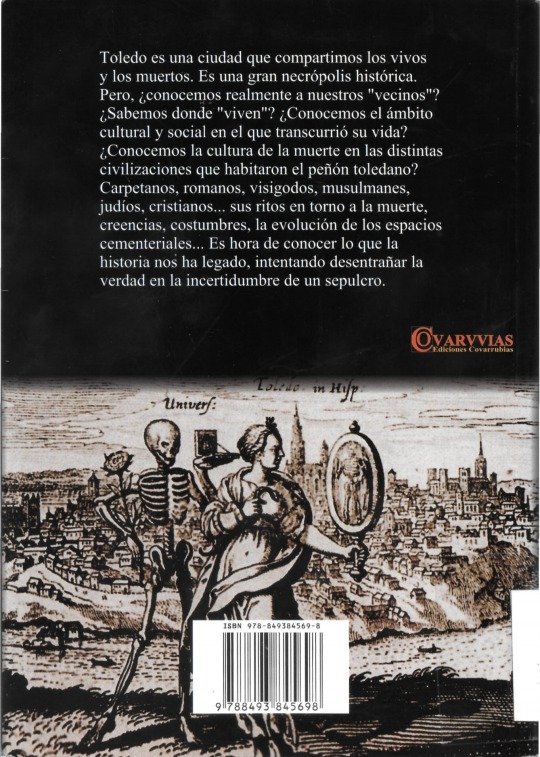
Backcover
Toledo is a city that the living and the dead share. It is a great historical necropolis. But do we really know our "neighbors"? Do we know where they "live"? Do we know the cultural and social environment in which their lives were spent? Do we know the culture of death in the different civilizations that inhabited the crag of Toledo? Carpetans, Romans, Visigoths, Muslims, Jews, Christians... their rites around death, beliefs, customs, the evolution of cemetery spaces... It is time to know what history has left us, trying to unravel the truth in the uncertainty of a tomb.
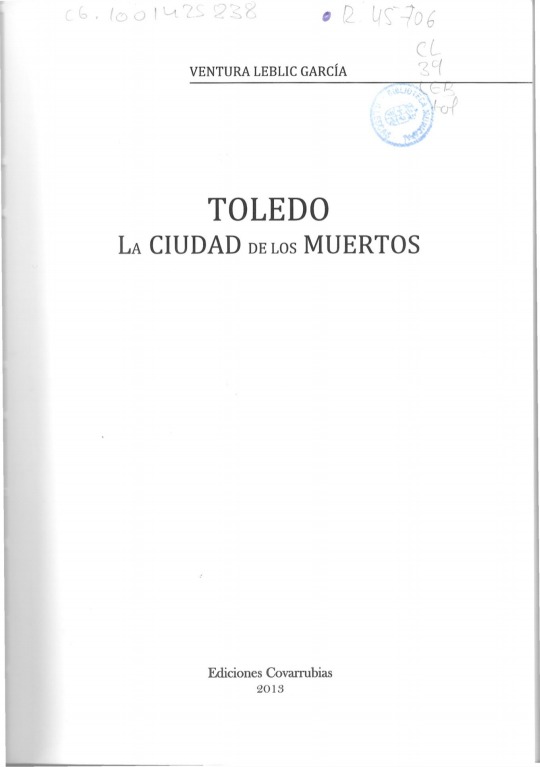
Toledo: The City of the Dead
Ventura Leblic García
Covarrubias Editions 2013

INDEX
Introduction. Page 9
Chapter I. Funerary practices in ancient times. Page 12
The indigenous people. Page 14
Chapter II. The cemetery spaces outside the walls of Toledo. Page 19
Roman cemeteries. Page 19
The early Christian cemetery. Page 24
Visigoth times. Page 31
Toledo's maqbara. The Muslim cemetery. Page 38
Toledo's Mozarabic cemeteries. Page 47
The Jewish cemetery. Page 50
Chapter III. The interior of churches as cementary spaces. Page 63
Chapter IV. Parish cemeteries. Page 70
Chapter V. The cemetery and the municipal cemetery. Page 103
Chapter VI. Royal burials in Toledo. Page 112
The New Kings Chapel. Page 136
New chapel. Page 139
Royal funerals in Toledo. Page 144
Chapter VII. Tombs of royal lineage in Toledo. Page 149
Chapter VIII. Other tombs in Toledo of people who made history. Page 170
The tomb of Doménikos Theotokópoulos "El Greco". Page 178
A frustrated pantheon of illustrious men. Page 182
Don Álvaro de Luna and Doña Juana de Pimentel. Page 188
An empty tomb for four hundred years. Page 191
The tomb of Cardinal Mendoza. Page 194
Francisco de Pisa. Page 196
The flying priest. Bartolomeu Lourenço de Gusmão. Page 197
Chapter IX. The Cistercian monastery of Monte Sión. A case of pantheon foundation. Page 201
The graves. Page 204
Chapter X. Bodies of saints and blesseds venerated in Toledo. Page 215
Chapter XI. Those who did not return. Page 232
Saint Ildefonso of Toledo. Page 232
Grave of Alfonso VI, king of Castile. Page 237
Alfonso X the Wise. Page 239
Francisco Jiménez de Cisneros. Page 240
Queen Joanna I of Castile. Page 242
Alfonso III de Fonseca, archbishop of Toledo. Page 243

Juan de Padilla. Page 244
Francisco de Rojas. Page 248
Cardinal Lorenzana. Page 249
Bibliography. Page 251
#books#toledo la ciudad de los muertos#toledo the city of the dead#ventura leblic garcía#history#pre-roman history#carpetan history#roman history#visigothic history#carpetania#hispania#jewish history#sefarad#sepharad#muslim history#al andalus#christian history#death rites#ancient history#medieval history#modern history#part 1#toledo#carpetan culture#roman culture#visigoth culture#christian culture#jewish culture#islamic culture#carpetans
2 notes
·
View notes
Photo
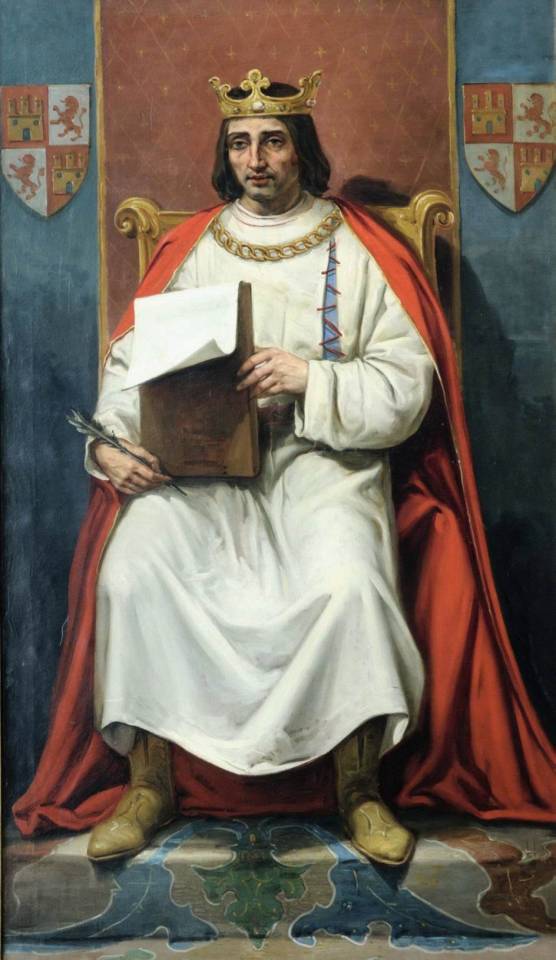
King Alfonso X of Castile by José María Rodríguez de Losada.
#José María Rodríguez de Losada#monarquia española#reyes de españa#reyes de castilla y león#casa de borgoña#kingdom of spain#house of ivrea#spain in the middle ages
5 notes
·
View notes
Photo

The craters (from left to right, top to bottom) Ptolemaeus, Alphonsus, Arzachel, and Albategnius on the Moon // MAILLARD
Ptolemaeus crater is named after Claudius Ptolemy (c. 100-170), the Greek astronomer who wrote the Almagest that solidified the geocentric model of the universe for the next millennium.
Alphonsus crater is named after King Alfonso X of Castile (1221-1284) who sponsored the creation of the Alfonsine Tables that computed the position of the Sun, Moon, and planets relative to the stars.
Arzachel crater is named after Abū Isḥāq Ibrāhīm Yaḥyā al-Naqqāh al-Zarqālī al-Tujibi (1029-1100), an Arabic astronomer who invented two medieval instruments for navigation by the stars.
Albategnius crater is named after Abū ‘Abd Allāh Muḥammad ibn Jābir ibn Sinān al-Raqqī al-Ḥarrānī aṣ-Ṣābi’ al-Battānî (bef. 858-929), an Arabic astronomer who, among many other things, refined and corrected Ptolemy’s Almagest and introduced trigonometry to the world.
#astronomy#astrophotography#solar system#moon#the moon#luna#lunar surface#lunar crater#crater#ptolemaeus#alphonsus#arzachel#albategnius#history
40 notes
·
View notes
Note
It seems from the interactions I see on social media there is some sort of animosity between Basques from Euskadi and Nafarroa, like distancing themselves from the ikurrina (which I get, they have their own flag, but I'm talking straight up hate). Which is undoudtedly a product of imperialism meant to further drive away any sense of solidarity for all of EH. On the other hand, I see many Basques from Nafarroa who exclusively use Basque (some from Lapurdi too) so maybe things are looking better..
Kaixo anon!
It'd be better to have some context for the situation you describe and that is sadly true. Let's keep in mind that Nafarroa it's divided in 3 different regions regarding Basque language.
Now let’s recap. Although it’s true that the southern side of Nafarroa was the part that suffered the Roman influence the most - it was an ideal location for Roman agriculture - and was very quickly romanized, Euskara didn’t disappear into thin air.
Back in the Middle Ages, Castilian king Alfonso X the Wise used Latin expression “lingua navarrorum” (the language of the Navarrese), and king Charles III of Navarre swore his coronation “in ydiomate navarre” (the language of Navarre). This language was clearly regarded as a different and opposed one to Castilian Romance or Latin, and scholars suspect it would have been probably Euskara.
These mentions happened after Muslim invasion, so we see that after centuries using Latin, Arab, and Romance in Southern Nafarroa, there still remained native languages which were used by many people; people enough for the kings to use it so they could be understood by their subjects, at least.
A bit further in time, in 1566, queen Jeanne III of Navarre requested to translate the New Testament to Euskara so her Basque-speaking subjects could understand it (Bibles and masses were solely in Latin, a language only known by priests and nobility by then). Why even bothering if in the Kingdom of Navarre Basque-speakers were a minority? We highly doubt that a queen was interested in bringing the Bible to a tiny part of the Navarrese population specifically…
However from the 16th century on, everything goes downhill: Castile assimilates the Kingdom of Navarre, all the high public servants would come from Castile or Aragon, and were unable and unwilling to speak Euskara. In 1795 the social elite (mayor, priests, etc) of Artaxona [also in the South, remember] went to court to demand that the town public notary learnt the Basque language since it was “the language most commonly used in town”. They lost the trial.
In the 19th century, the French invasion and the Carlist Wars hastened the regression of Euskara in southern Navarre, that turned almost 100% Spanish-speaking. Franco’s dictatorship just consolidated that situation.
So historically, Basque was spoken by most Navarreses - no matter from the north or the south -, it was just in the last 200 hundred years when it was lost in the southern part of the region.
Nafarroa becoming divided into zones [Basque-speaking, transition, and non-Basque-speaking] is said to be based on history but we all can see it’s bullshit.
That said, it's a bit easier to understand why some Navarreses have this animosity towards Basques - it's not only towards Basques, it's also towards Basque-speaking Navarreses. They like to be considered Navarrese and not Basques - which is super respectable - because the kingdom of Navarre was the one that included Basque people and not the other way around - which is also very true! But don't be fooled. They will swiftly drop historical accuracy to defend that Basque was never spoken in middle and southern Nafarroa and that Basque is being imposed as part of a Basque political agenda; that Basque people are trying to colonize them and make them lose their identity; and that they should resist at all costs by rejecting Basque as an imposed language. French and English - taught in every school - are not imposed and free to go on seemingly.
See how just 2 centuries of assimilation and banning of Basque have twisted their perception? Basque people are imposing our language on them... our language that for centuries was called... the language of the Navarrese??? It's insane.
So this is what dividing a region into here you can speak a language, here you can speak it but you'll be part of a tiny minority, and here you'll find every obstacle imaginable to speak / learn it does to people. Language zonification in Nafarroa is evil and a tool for assimilation that - as you have checked yourself - has worked wonders.
#euskadi#euskal herria#basque country#pais vasco#pays basque#euskera#euskara#basque#language#long post#history#anons#nafarroa#zonification
31 notes
·
View notes